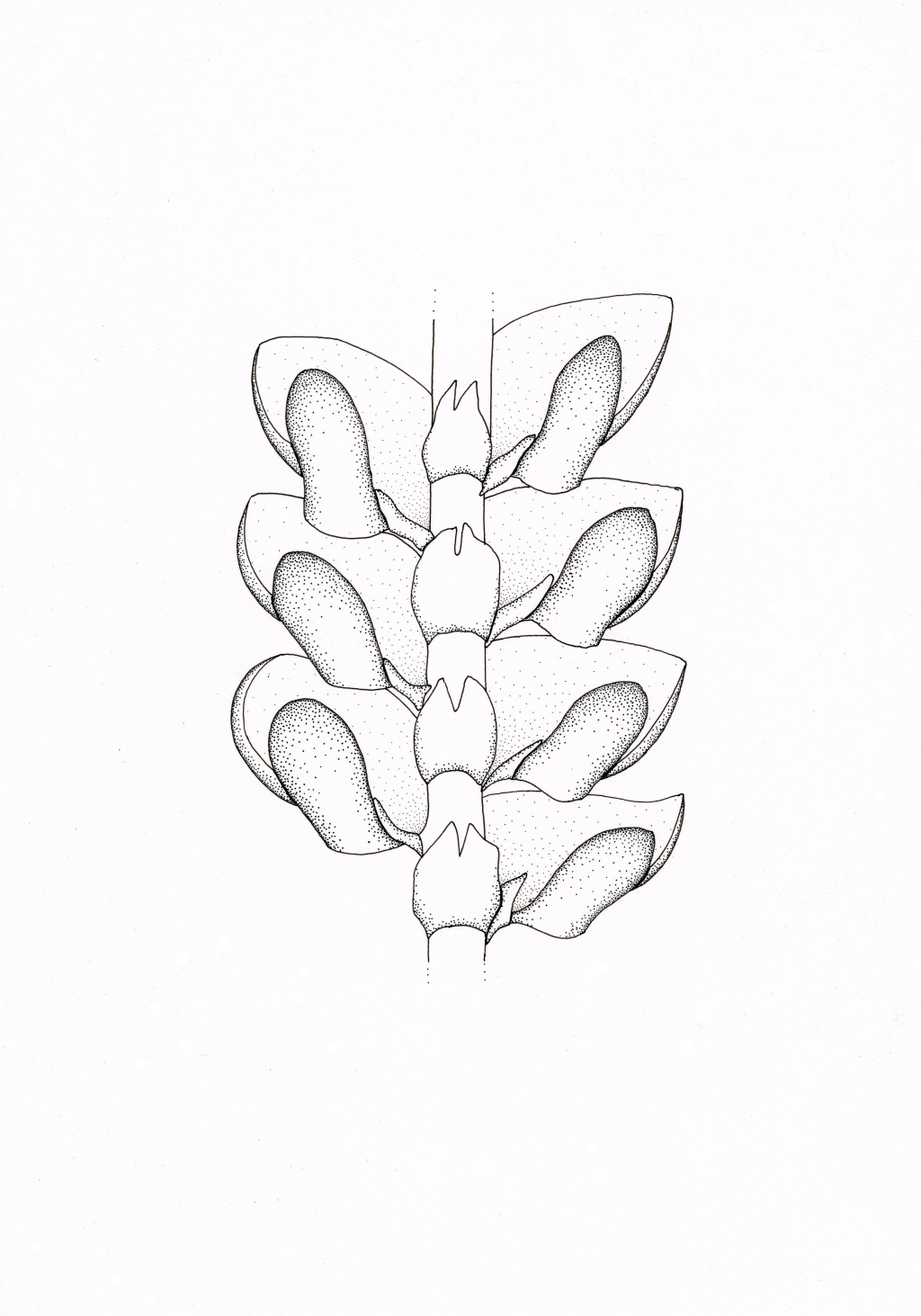Frullania rostrata
(Hook.f. & Taylor) GottscheEpiphytic or lithophytic, reddish-brown. Stems pinnately or bipinnately branched. Mid stem and branch lateral leaf lobes ovate-oblong, 0.28–0.53 mm long, 0.23–0.4 mm wide, rounded or rarely obtuse and usually minutely apiculate-acute at apex, not angled away from substrate when moist, imbricate or contiguous; cells oblong at base, becoming rounded-quadrate toward margins, 7–10 µm long and 5–8 µm wide at margins, 10–23 µm long and 7–11 µm wide near centre, 22–33 µm long and 9–23 µm wide toward base, with trigones and intermediate thickenings at base, becoming ± equally thickened without trigones at centre and margins. Lobules short-cylindric, 0.16–0.2 mm long, 0.1–0.13 mm wide, diverging at 30–50˚ from stem, obtuse at apex; cells irregular 12–25 µm long, 6–15 µm wide, with prominent trigones and intermediate thickenings throughout. Stylus foliose, ovate, with acute to pilose apex. Underleaves cuneate-orbicular in outline, bifid to 2/5–1/2 of length, otherwise entire, 0.18–0.26 mm long, 0.1–0.24 mm wide, flat; sinus acute; cells oblong to quadrate, more elongate along centre, 7–25 µm long, 5–13 µm wide, ± evenly thick-walled throughout or with indistinct trigones. Perianth pyriform, 0.9–1.3 mm long, 0.46–0.68 mm wide, 3-keeled, concave dorsally, obtuse at apex, with large beak, smooth.
Wim, VVP, Gold, CVU, GGr, EGU, WPro, HSF, HNF, OtR, Strz, MonT, HFE, VAlp. Mostly along the Great Dividing Range and in mountainous areas to the south. Also Qld, NSW, ACT, Tas and New Zealand.
Frullania rostrata and F. aterrima are the Victorian representatives of the subgenus Microfrullania, that are defined by small size, and lobules with their apices angled away from the stem. Frullania rostrata is most readily distinguished from F. aterrima by its much larger ovate stylus (sometimes half the area of the lobule) and entire underleaf margins.
 Spinning
Spinning